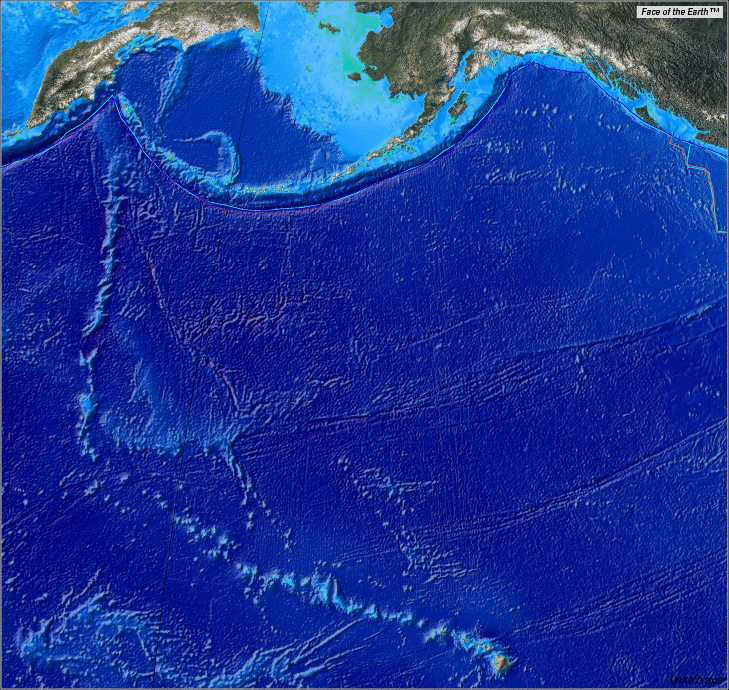The type of rock formed depends on the activity of the volcano which in turn is determined by it's association with the hotspot. Thus it is possible to see stages in the lifecycle of a volcanic island on the hawaiian island chain.Jbuza wrote:I'm lost here . . .
the Seamounts, Darwins Points and Atolls show evidence of erosion as shown by the exposure of the different layers of volcanic rock.
On the islands which are currently active we can see these layers intact.
USGS
What layers of volcanic rock? I assume that each eruption may add alayer of volcanic rock. IT seams that erosion would be much more harsh if much of the volcanism happend underwater. I have read a few things about development of part of hte chain during the years of the flood.
What is really demonstrated here and what is the data?
Hawaiian islands are known as shield volcanoes. The nature of the baslatic lava forms islands with gentle slopes rather than jagged peaks.
Lets take a look at Loihi. Loihi is the youngest of the hawaiian volcanoes. It is still under water. Being under water the resulting lava is different that that which occurs terrestrially. Here's a page analyzing recent samples.
Lava forming underwater forms a puffy type of rock called pillow basalt. On the surface lava cools into a type of rock called panoenoe, the texture reminicent of ropes. Sometimes the cooling process involves the escape of gasses, this type of cooling forms a rock termed aa.
Take a visit to the Waimea Valley in O'ahu and you can see examples of pillow lava exposed by erosion.
If a shield collapses further erruptions fill in the caldera and cool differently producing rocks more resistant to errosion. You ca take a trip to Kauai to see these formations.
Valleys and landslides are more than signs of erosion, they can change the local composition of the soil.
As rain travels down the slopes they create valleys and cut ridges. These in turn can be covered again with lava flows. Somtimes lavaflows will will in cracks in the surface and lead to unique formations known as a columnar basalt.
When an island becomes submerged through subsidence the result is either a flat topped seamount or a coral fringed atol.
Nothing is demonstrated this is only a list of observations. Do you disagree with this observation?

